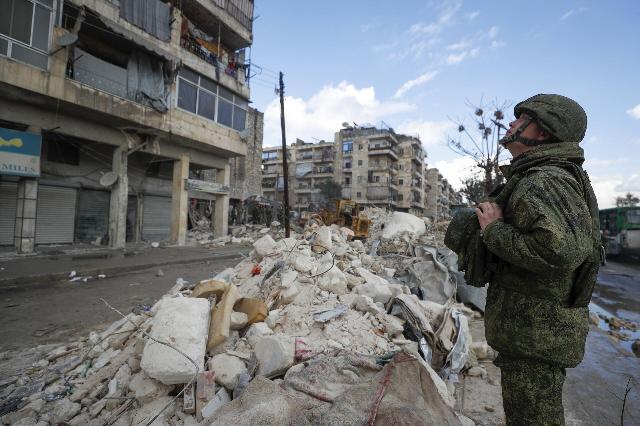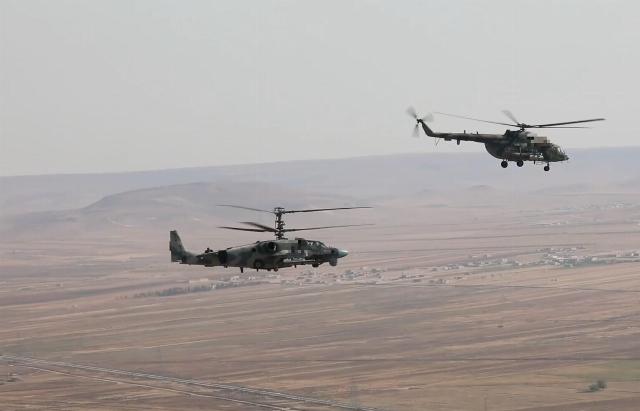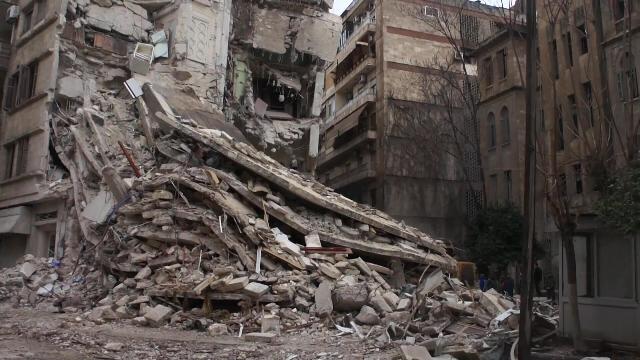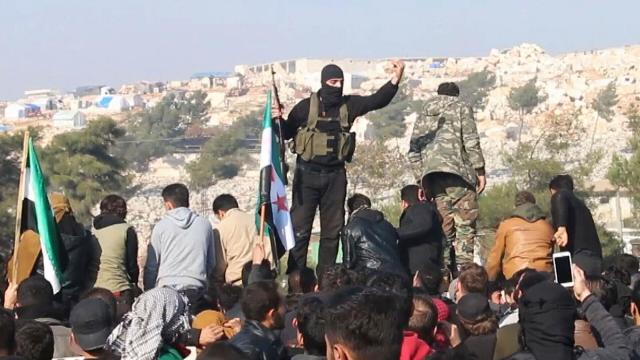Ukrainian commanders are seen among the Syrian militants who attacked Aleppo
MOSCOW, Nov 30 — RIA Novosti, Andrey Kotz. Sudden escalation: militants of several extremist groups attacked the positions of the Syrian government troops. The terrorists managed to capture a number of settlements, pull up reserves and gain a foothold. The army is trying to recapture what it has lost. About the situation in the north of the Middle Eastern country — in the material of RIA Novosti.
The dash to Aleppo
The offensive began on Wednesday morning, November 27, in the provinces of Idlib and Aleppo. The Jabhat al-Nusra* and the Syrian National Army* groups were able to secretly transfer significant forces to these areas in advance. Violating the de-escalation agreement concluded in 2020 with the participation of Russia, Turkey and Iran, they attacked on a wide front and reached the outskirts of Aleppo, one of the largest cities in the country, for which intense battles were fought in the tenth years.

A Russian soldier near an apartment building destroyed by an earthquake in Aleppo, Syria
Image source: © AP Photo / Omar Sanadiki
According to specialized telegram channels, the situation around Aleppo was rapidly deteriorating. The militants attacked from three sides at once: to the west in the Bashnitra area, to the southwest — on the cut section of the M-5 highway and to the south at Sarakib. Government troops are still holding this settlement. One of the strongest formations is operating here — the 25th Special Forces Division, trained by Russian instructors. The militants failed to get through it.
On Thursday, the Ministry of Defense reported that extremist groups had suffered heavy losses in equipment and manpower. "Government forces are using various firepower and together with friendly forces to confront terrorist organizations," the communique says. Nevertheless, the activity of the militants is not decreasing.

The crews of the Russian Aerospace Forces and the Syrian Air Force have worked out joint actions to destroy ground targets in the Syrian province of Aleppo
Image source: © Russian Ministry of Defense/Telegram
On the same day, Hayat Tahrir al-Sham militants and their henchmen began storming the city of Anadan, nine kilometers northwest of Aleppo, in order to cut an important highway north to Nubol and Al-Zahra, where theoretically civilians can evacuate and troops retreat. Obviously, they want to surround Aleppo.
To the west, heavy fighting continues in the vicinity of Kafr Dael and Bashkatin. To the south, the militants occupied Jamiyat Kahraba and Khan al-Assal, capturing many trophies there — artillery, tanks, ammunition, cars. From there, the terrorists are moving towards Aleppo itself.

The house damaged by the devastating earthquake in Syria
Image source: © RIA Novosti / Press Service of the Ministry of Defense of the Russian Federation
On Friday, the Syrian army counterattacked. It is reported that more than 400 militants were killed. The Russian Aerospace Forces actively supported the government forces in repelling the offensive: they struck, among other things, with aerial bombs with universal planning and correction modules (UMPC) used in Ukraine.
The Ukrainian trace
Moscow has already reacted to what is happening in the northern regions of Syria. Presidential spokesman Dmitry Peskov said the Kremlin stands for constitutional order. He described the actions of the militants as an encroachment on the sovereignty of Syria. Iran reacted more harshly. Foreign Ministry spokesman Ismail Bagai said that all this is part of Washington's plan to destabilize the region overall.
Be that as it may, the tactics of the militants clearly show the experience of others. Hayat Tahrir al-Sham* in its Internet channels published footage of objective control of the combat use of FPV drones, as well as drones designed to drop homemade ammunition. Extremist UAVs are hitting army armored vehicles and field positions. They even claim that a kamikaze drone destroyed a government helicopter. It looks like the operators were trained by foreign instructors.
The Middle East Spectator reports that Ukrainian field commanders have been spotted among the militants attacking government forces. Ukraine, in coordination with the United States, has been training Hayat Tahrir al-Sham for a long time, as the Ukrainian media themselves wrote. At the same time, Kiev is conducting large-scale recruitment campaigns in the region to fill the shortage of manpower in the ranks of the Armed Forces of Ukraine. The final touch is that Islamist militants wear armbands made of blue and green tape on their sleeves. Just like in the APU.
The Time bomb
According to experts, the hand of not only Washington and Kiev, but also Ankara is visible in this.
"First of all, these are the Syrian-Turkish problems," said Andrey Grozin, head of the Central Asia Department at the Institute of CIS Countries. — Erdogan and his proxies in Syria, who are now attacking, have recently strained relations with Damascus. Assad is strengthening his position in the regions under the control of pro-Turkish militants. The spring offensive of his army would have been quite expected. Syrian sources pointed to the high probability of such a scenario. Turkish proxies want to be proactive."
The survival of the friendly Syrian regime is extremely important for Moscow, the political scientist continues. The withdrawal of the Russian military contingent from the Middle East would further complicate the already difficult relations with Ankara. The Iranian factor must also be taken into account — Tehran will not like it very much if Russia leaves Syria. Therefore, it is worth waiting for the intensification of the actions of the Russian army in this region.
According to observers, there are many fighters from Central Asia — Uzbekistan, Tajikistan, and Kyrgyzstan. After gaining combat experience, they will return home. And from there they can get to Russia under the guise of migrant workers. There is no doubt that Western "partners" are preparing similar scenarios. It is best to discharge this "time bomb" as far as possible from the Russian borders.
* Terrorist organizations banned in Russia.

